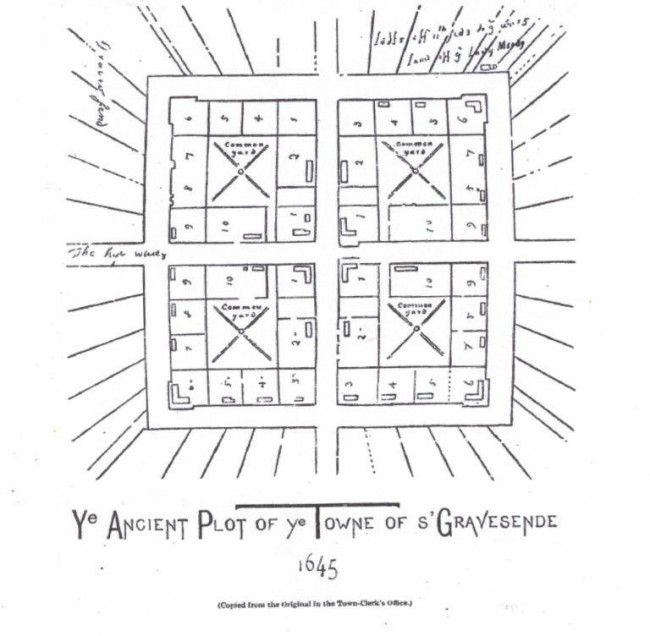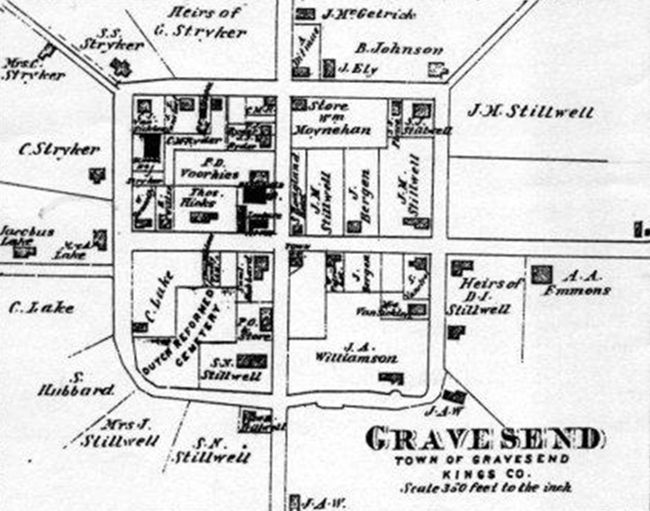
We are celebrating 15 years — and counting — of stories that are deeply researched and deeply felt, that build a historical record of what the city has been.
We are celebrating 15 years — and counting — of stories that are deeply researched and deeply felt, that build a historical record of what the city has been.
At first glance, Gravesend seems like the typical southern Brooklyn neighborhood. More suburban in feel than their northern counterparts, these communities became desirable in the early- to mid-20th century to those seeking larger homes with front and rear yards, ample parking space and commercial districts that serviced daily needs. Much of this area was originally comprised of Dutch homesteads surrounded by several acres of farmland; thus providing the ideal landscape to develop neighborhoods ripe for accommodating all those seeking refuge from the cramped living conditions in the more settled areas of Brooklyn.
But Gravesend’s history is different from the neighborhoods that surround it. Whereas most areas were essentially blank slates where land could be graded, utilities laid, infrastructure built, and houses erected, Gravesend had already developed nearly 300 years prior. Bounded by the busy thoroughfares of McDonald Avenue and Avenue U, the four quadrants that comprise the original grid plan of the town of Gravesend remain a visible part of Brooklyn’s street fabric. It is commonly believed that the name Gravesend was derived from the Dutch words Grafes and Ande, which combined mean “end of the grove” or “count’s beach.” [1] However, some contend that the name is an homage to the English city of Gravesend which abuts the Thames River. This theory is plausible: of the six original towns of Brooklyn, Gravesend was the only one established under the English charter, by a wealthy British widow by the name of Lady Deborah Moody.
The motives behind Lady Moody’s journey to Brooklyn are familiar to any student of 17th century migration to America. To flee religious persecution in England, she immigrated to the Massachusetts Bay Colony in 1639. Soon after her arrival, however, she learned that Puritanical New England was just as intolerant as the society she’d escaped. As a result, she led a group of other like-minded individuals to relocate to the Dutch colony of New York in 1643. In December 1645, the Dutch colonial administration granted her permission to settle in Gravesend, to self-govern, and to worship as she wished. Thus, Lady Moody became the first woman to charter land in the New World.
Rather than just a wealthy figurehead, Lady Moody was an effective community leader and city planner who established one of the earliest planned communities in the United States. A 1645 town plot diagram shows how she laid out a 16-acre square, separated into four quadrants of ten lots each. In each quadrant, the land around the perimeter was used for housing, leaving a central square behind each house as common area, which provided the sites for the burial ground, school, town hall and church. Individual plantations were also provided for farming, which radiated outward from a point at the center of the town.[2]

Original Plot of Gravesende – 1645. Image via dunhamwilcox.net
I grew up close by in Marine Park, a neighborhood whose historic significance is evident in the Dutch homesteads on streets bearing the names of prominent Dutch families. As development accelerated in the 1920s and the 1930s, Dutch settlements were dismantled and the land subdivided and sold by parcel to developers. Only small pockets of historic sites were preserved – such as the Lott House, the Wyckoff-Bennett Homestead and the Hubbard-Ryder House – each surrounded by near identical 20th century housing. While this pattern of demolition and redevelopment is typical across southern Brooklyn, Gravesend proves an exception: its original town square is intact, as are various Dutch homesteads and two historic cemeteries that serve as the final resting place for the area’s original inhabitants.

Two Hundred+ Years Later: Gravesend Town Map – 1873. Image via Wikimedia Commons
The house that understandably garners the most attention is 27 Gravesend Neck Road. This house is commonly referred to as the Lady Deborah Moody House, despite assertion from various historians that she never lived there. A widely accepted belief is that the house was built on a plot of land she had once owned (her son’s name is listed on historical records concerning the sale of this property in 1659). The exact year the house was built is unknown. According to the AIA Guide to New York City, the house was built in the 17th century, but other research claims that the mid- to late-18th century is more accurate. Either way, unscrupulous alterations over the years mask the architectural merits of the historic property.
Directly across the street from the Lady Moody House lies Old Gravesend Cemetery, the oldest cemetery owned by New York City, dating back to 1643. Interred within the graveyard are some of the Protestant Anabaptists that originally settled in Gravesend under Lady Moody’s patent. According to legend, Lady Moody is also buried here in an unmarked grave; however, the oldest headstone discovered dates back to 1676. The graves of men notable in the Revolutionary War are buried here, as well as many from Brooklyn’s founding families: Cowenhoven, Ryder, Van Nuyse, Suydam, Wyckoff, Van Pelt, Gerritsen, and Dyckman. [3] The Van Sicklen family maintained their own graveyard in the northwest corner of the cemetery, which is separated by a fence.
Around the corner and located on Village Road North stands the Charles Ryder (circa 1788) and Ryder Van-Cleef (1840) Houses, both prominent examples of early Dutch architecture. In fact, the Charles Ryder House served as a school when President George Washington paid a visit in 1789. [4] Although both homes have since been moved from their original sites, I would posit that their current locations are equally significant, as they form the backdrop for one of the area’s most beloved and commemorative public areas.
Lady Moody Triangle features a two-sided stone memorial – one side commemorating Lady Moody herself and the other paying homage to a more recent generation of Gravesenders, those from the neighborhood who sacrificed their lives in World War II. This monument, which shares the space with a garden, public seating area, and buried neighborhood time capsule, celebrates the area’s prominent inhabitants from its inception. A highly visible reminder of Gravesend’s past, this memorial also serves as a tool to enlighten visitors and explorers.
What makes Gravesend so fascinating is that its historical legacy remains visible, despite almost 400 years of development. Chances are that if Lady Moody founded her settlement in what is now Downtown Brooklyn, it most likely wouldn’t have survived until today. Multiple factors may have kept this pocket intact – perhaps its distance from Manhattan, the presence of the cemeteries, or the surrounding busy thoroughfares. But extant evidence of the original settlement does not mean its legacy is well understood. I grew up in relatively close proximity to this historic village, but I never knew it existed until I began to study Brooklyn’s history and architecture. When I learned about this majestic piece of history in my figurative backyard, I asked myself: are there other historically significant sites in Brooklyn that I don’t know about? Of course, the answer is yes. Given Gravesend’s storied settlement at the hands of an early female pioneer, it is most fitting that this site would be the catalyst for discovering an undying interest in local history and exploration.
Jackson, Kenneth T. The Neighborhoods of Brooklyn. 2nd Edition. Yale University Press, 2004.
Old Gravesend Cemetery Designation Report – NYC Landmarks Preservation Commission. Number 10. LP-0921. March 23, 1976.
Ibid.
Walsh, Kevin. Forgotten New York. New York: Harper Collins, 2006.
The views expressed here are those of the authors only and do not reflect the position of The Architectural League of New York.
Comments